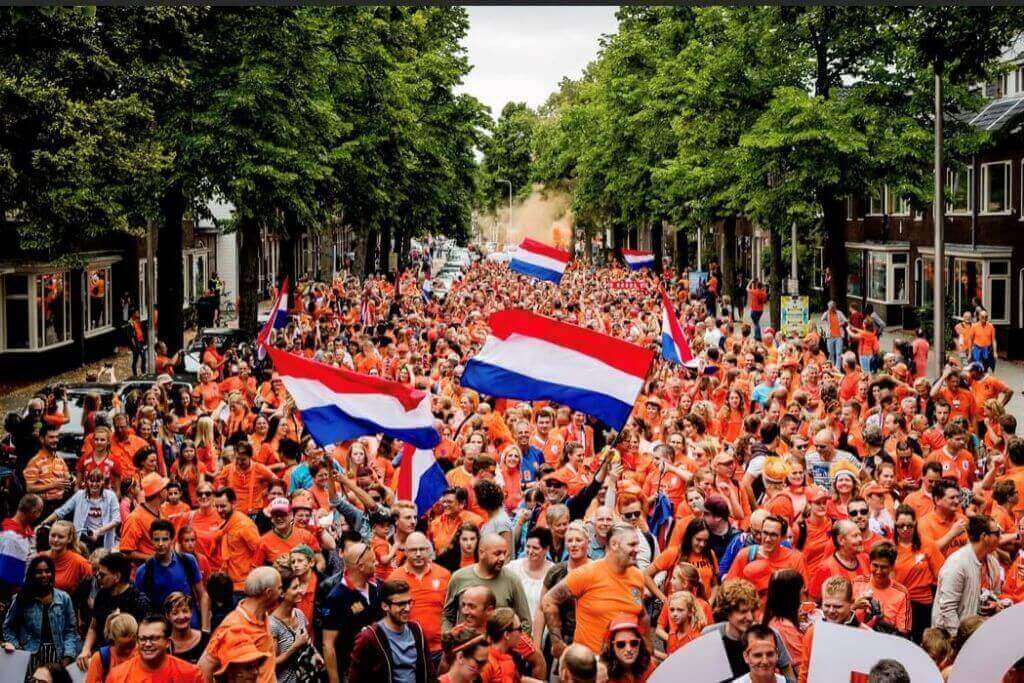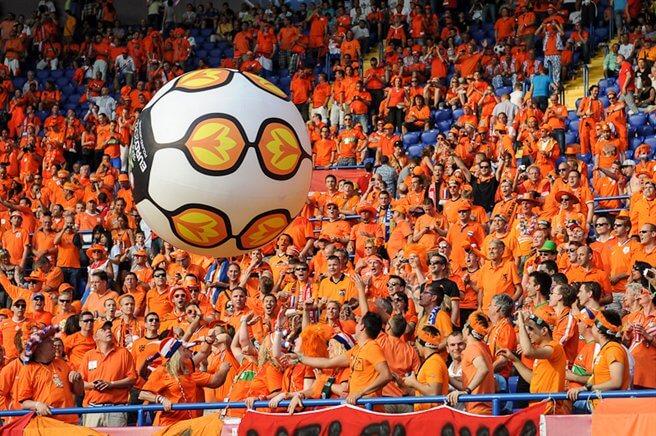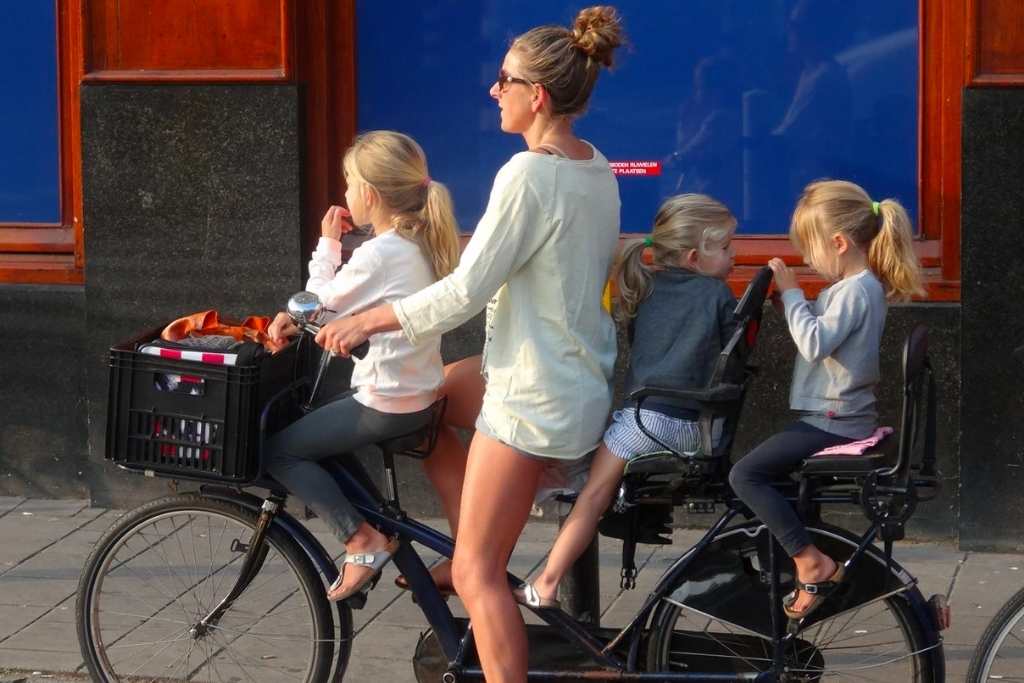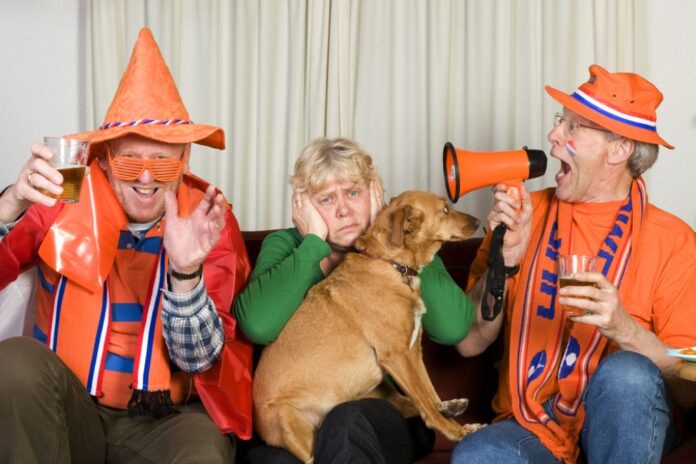Yes, the Dutch are renowned to be eccentric. Or do we conceive of ourselves in this way? We’re Dutch, so we had to do some research on our own folks from The Netherlands to figure out what was so strange about us.
1. The Dutch are direct!

No, we are not impolite. We tell you what we think and speak exactly what we mean. Being truthful is very important to the Dutch. We don’t mean to insult you; we just want to be honest with you. Dutch people will tell you if you have something stuck in your teeth. When you offer us a piece of cake, we don’t want to eat it. The Dutch say no without hesitation. If you’re attending our birthday celebration with a gift we already have? Dutch people will tell you right away.
To tell the truth, it’s much easier. Isn’t that right? Things are so much easier with a little Dutch Directness. Don’t you agree?
2. Dutch people are notorious for hosting dull birthday celebrations!
Okay. It is dependent on the generation. Student parties are wilder than the ordinary Dutch birthday party, but they are still wild. People at a typical Dutch birthday party sit in a circle and talk to one another. There is food and drinks in the center, and there is no loud music.
We’ve heard from foreigners that birthday parties don’t provide a lot of food. Does this imply that the Dutch are cheap? What are we famous for around the world? I’ll return to that later in this article.
Snacks from the Netherlands
Don’t forget about the unwritten regulations Dutch people have about the order of food entering the party. First comes a piece of pie or cake with coffee or tea, followed by alcoholic beverages such as wine and beer. Perhaps a local gin-like ‘Jonge Jenever’ for the elderly. We consume cheese cubes, folded meat bits, and stuffed boiled eggs as typical Dutch snacks. We like to fried appetizers like ‘Bitterballen’ and dip them in mustard when it gets late and the beers start to kick in.
For foreigners, it’s strange that when someone enters the room, he shakes your hand and gives you three kisses on the cheek to congratulate everyone at the party. Even if they don’t know each other. When entering a birthday party, Dutch folks encourage their children from an early age to extend a hand to everyone and congratulate them.
Calendars for birthdays
We Dutch don’t want to forget other people’s birthdays, therefore we keep a calendar on our toilet wall with all of our family and friends’ names and the exact dates to remind ourselves. It’s people’s birthdays, marriage anniversaries, and the date someone died. Nearly anything. So if your name appears on a Dutch calendar, it signifies you did something very good. Alternatively, you can simply add your name to the calendar. When the Dutch get a little tipsy, they do the same thing.
3. Dutch people love to celebrate the King’s Birthday!

Despite the fact that we have dull birthday celebrations. We know how to have a good time! Especially on King’s Day. The date is April 27th. The entire country is off work and dressed up in strange orange clothes. The evening before, dubbed ‘Koningsnach’ = Kings night, large free festivals and parties in the streets, clubs, and taverns begin. Because Dutch people like to travel to the capital to celebrate Kingsday, Kingsday in Amsterdam can be highly busy. The most popular activity among Dutch people is to rent a boat and tour the canals while drinking beer and dancing to loud Dutch music. You’ll be lucky if you don’t collide with any other boats today.
It is also the one day of the year when Dutch people can sell ‘trash’ on the streets. It’s a massive garage sale in the squares and streets of every city and village in the Netherlands. Everyone, from adults to children, is selling their wares on the streets.
If you wish to visit the Netherlands, then Kingsday is the finest day to do so. It’s the most real and one-of-a-kind Dutch event you’ll ever see. It’s spring, so the tulip fields are in full flower at this time of year. So it’s ideal to spend a few days in the Netherlands during the most colorful period of the year.
4. The Dutch are quite down-to-earth.
The Dutch have a national slogan that goes, “Doe maar normaal, dan doe je al gek genoeg.” This literally means “Just act normally, that’s crazy enough.” The Calvinist mindset of the Dutch is all about modesty and being down-to-earth.
We despise arrogance. In talent shows, the contestant who is far too arrogant will never advance to the following round. Whether he or she has talent or not, the Dutch will always send him or her home. We just do not tolerate arrogance among our own people. We do, however, appreciate self-assurance!
5 When the Dutch National Soccer Team ‘Oranje’ competes in the European or World Cup, the Dutch people go insane.

The Dutch are huge soccer enthusiasts. We are the orange legion, and as down-to-earth as we are on a daily basis, we are not when it comes to supporting our national soccer team.
We’re constantly looking forward to the next European or World Cup, which is held every two years in the summer. A few weeks before the tournament, Dutch residents began to decorate everything in orange, including houses, streets, automobiles, buildings, and offices. Everything to show support for the ‘Oranje’ (Orange) team.
When the game is on, the Dutch dress up in outrageous orange attire. We go all out with orange lions, clowns, strange hats, and painted faces.
Actually, the ‘wild’ outfits were originated by soccer fans in the Netherlands. After a few years, other countries followed our lead, and practically every soccer-crazy nation today dresses up in bizarre clothes.
When the game is on, we like to watch it on giant screens in the streets, bars, public squares, or in someone’s backyard with the entire neighborhood. With plenty of drinks, food, and a hot grill. Don’t be surprised if you’re invited to an Orange Team viewing party with Dutch people. We enjoy sharing our experience and are very proud of our staff. Most of the time… We, like every other nation, are quite critical of our national squad before any big tournament, right? However, when the competition begins, the Dutch go into full orange beast mode. And they must be certain that they are in it to win it. That, unfortunately, is not the case.
6. Why do Dutch people wear orange when the Dutch flag is red, white, and blue?
The color orange has dominated since the reign of William of Orange. He was a key figure in the Dutch uprising against Spain during the Eighty Years’ War in the 16th century. To honor their chief, the ‘Geuzen’ (the rebels) changed the color red on the unofficial national flag to orange. Although the Dutch flag’s colors have since been restored to red, white, and blue. Orange is still the national color of the Dutch people, the royal family, and all national sports teams.
7. Despite the fact that Dutch winters are mild, Dutch people like ice skating.
Although the winters are no longer as frigid. Every year, Dutch residents hope that it will frost enough to allow them to ice skate on the canals and lakes. In the north of the Netherlands, we have a very famous and legendary tournament called ‘Elfstedentocht’ = Eleven city tour. It is nearly 200 kilometers long and is the most famous ice skating challenge on natural ice for Dutch people to participate in. The last one was in 1997, however every year when it begins to freeze or becomes a little colder, a large number of Dutch people have ‘Elfstedentocht’ fever. I’m hoping the ‘Elfstedentocht’ is active.
This fever is one of the reasons why the Dutch excel at speed skating. The Dutch competitors won 24 medals, including 8 gold, in the 2014 Winter Olympics in Sochi. And four times, the entire podium was orange because Dutch sportsmen won bronze, silver, and gold! In 2018, we came close with 20 medals in speedskating. Yes, we know what to do when it comes to speed skating. Strangely, that does not apply to ice hockey, which is a minor sport in the Netherlands.
8. The Dutch are renowned to be inexpensive! But are we sure?
Yes, we recognize this as our image. Going Dutch, or splitting the bill, is fairly common and well-known over the world. Large restaurant/bar bills are even divided with large groups in the Netherlands. In many Dutch restaurants, you will find on the menu that the restaurant does not allow paying one bill with ten or more individuals. There are apps specifically designed to help Dutch individuals with this issue. But are we truly inexpensive?
9 When it comes to cycling, we’ve got it down pat! However, we do not wear helmets.

In the Netherlands, we have more bikes than Dutch people. We have a wide network of cycle trails all throughout the place. In traffic, the rule is that the bike is always correct.
We can easily cycle around because we live in a flat country. And, because our city centers are historic, with small streets and often a car-free zone, cycling across the city is far faster than driving through or around it by car. So Dutch people ride their bikes everywhere: to work, to school, to the store, to friends/family, to college, to our weekend sports clubs, and to restaurants and bars. Dutch folks transport their children in the ‘achterop’ (backseat) or in the ‘bakfiets’ (front seat). After we learn to walk, we learn to pedal as Dutch children. In primary school, Dutch students must pass a riding test in order to learn how to pedal safely to and from school.
Cycling is so popular in the Netherlands that the majority of Dutch people do not consider themselves cyclists. “We’re not cyclists; we’re just Dutch,” they say. The bicycle is an essential element of our daily lives. That is most likely why Dutch people do not wear helmets. Wearing helmets for safety reasons is becoming more fashionable, but it is still uncommon. Mostly with children or real cyclists who use cycling as a sport.
10 No other country enjoys liquorice. But the Dutch do!
You know those black candies we call ‘Drop’? ‘Drop’ may be found all across the Netherlands, and we have ‘Drop’ in every flavor, from sweet to salty, hard to soft, and in a variety of shapes and sizes.
The Netherlands has the largest per capita consumption of liquorice in the world, with each person consuming more than 4 pounds (2000 grams) per year! That’s quite a lot. One of the items we don’t leave at home when we go on vacation, along with Dutch cheese and ‘Hagelslag’ (Dutch sprinkles Dutch people put on their sandwiches), is liquorice. When we go camping in France, Spain, or Italy during the summer, every Dutch family packs ‘Hagelslag’ in the car or caravan. ‘Hagelslag’ is indispensable to the Dutch.
11. The Dutch smother everything in mayonnaise!
Don’t get between mayonnaise and the Dutch. We don’t take a decent mayonnaise for granted. We dislike French mayonnaise because it is very sour. We enjoy our own creamy mayonnaise from brands such as Remia and Calvé.
Snack bars are common in the Netherlands. They are small takeaway restaurants that cook nearly anything and are popular on Sundays when the Dutch are hungover. You order fries with a side of kroket, frikandel, or kaassoufle. And the Dutch like to dip their fries in mayonnaise. Or a sauce mixture with mayonnaise.
12. The Dutch prefer their beer with a layer (two fingers) of beer froth.
We prefer our beer with a coating of foam on top. Not the English version, which contains almost no foam. We only needed a small amount of foam, which we measured with our own two fingers.
When you place your two fingers horizontally against the top of the beer glass, the foam becomes as thick as your two fingers. That’s how the Dutch like their beer.
There is a reason for this. It keeps oxygen from entering the beer. The gas in the beer does not fade when there is a layer of froth on top. The taste of the beer is also affected by oxygen from the air, which is undesirable. When the foam has disappeared, Dutch folks will declare that the “beer is dead.” It no longer tastes as fresh. To prevent our beers from spoiling, we serve them in small glasses. So you accomplished it without even realizing it.
13. We eat raw herring.
Raw herring consumption has been a tradition in the Netherlands for about 600 years. Because of the close proximity of the Northsea, eating herring is highly popular among Dutch people living in the west of the Netherlands. That’s the sea from which all the herring is coming. The herring is not technically raw. It is frozen and then placed in salt for a few days to allow the fish to mature.
Eating herring was largely for practical reasons back in the day. Herring is high in fat and minerals. They preserved it in a salt barrel so that Dutch people might eat herring all year.
The Dutch even have a term for the new fresh herring that arrives every year: ‘Hollandse Nieuwe’. Herring fishing is only allowed from May until mid-July. That is when the herring is at its largest. So, when the first herring fisherman arrive in the harbours, the Dutch will go to the many eateries to enjoy the new herring of the year. The fatness and flavor of the fresh catch can vary from year to year.
The Dutch consume herring by taking the tail, pulling it over their heads, and placing it in their mouths. They consume the entire herring in virtually one mouthful and leave the tail on the platter. Herring is typically served with onions and/or gherkins.
14. Every year on January 1st, hundreds of Dutch people take a plunge in the frigid North Sea as a New Year’s resolution.
Swimming in ice-cold water is frequently referred to as “winter swimming.” Northern Europe and North America are particularly fond of the phenomenon. There are even winter swimming associations that conduct contests only in cold temperatures. These societies are known as ‘polar bear clubs’ in the United States and Canada, and they often conduct ‘polar bear plunges,’ in which they dive for a brief period of time in ice-cold water, usually to raise money for charity.
To commemorate the New Year in 1920, Canadian Peter Pantages organized a polar bear plunge. The initial edition of the Canadian ‘New Year’s Dip’ had only five swimmers, but the event quickly became an annual tradition.
